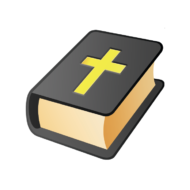Integration of MyBible with Google Drive, using Google authentication, is in plans but not implemented yet. Such integration would not only provide MyBible data backup in the cloud but would also support synchronization of the MyBible state between the user’s devices.
For now, MyBible supports data backup and synchronization using a third party app that synchronizes the MyBible data directory with the cloud.
Starting with Android 13, third-party apps have no access data directories of other apps, so a third-party app cannot reach the MyBible data directory /Android/data/ua.mybible/files/MyBible. So, if your device runs Android 13 or newer:
- Take care of the MyBible data backing up manually – by periodic connecting your device to a PC via a USB cable and copying to the PC the entire MyBible data directory /Android/data/ua.mybible/files/MyBible.
OR
- Use the X installation of MyBIble and move the data directory to /MyBible (using the “Data directory” group of the MyBible settings). This will let you use the described below MyBible data synchronization approach – because the /MyBible directory is accessible for file managing apps.
Synchronization principle
MyBible synchronization is based on the following:
- MyBible stores all its data in its data directory, which is located:
- on Android 10 and older – most likely in the root of the built-in memory, in the /MyBible directory
- otherwise – in the app private directory /Android/data/ua.mybible/files/MyBible.
- The MyBible/user subdirectory contains all the data entered/collected by the user (settings, bookmarks, reading places, notes, themes, etc).
- A third party app, working with the Google Drive or Dropbox service, synchronizes the files with the cloud.
- MyBible detects and loads the external changes (i.e. applies the result of synchronization) when the main window is activated.
Setting up MyBible synchronization
Use a third party files synchronization app, like Dropsync or Drive Autosync, to synchronize the MyBible data directory between your device and the cloud storage of the Dropbox or Google Drive, respectively.
Steps to set up MyBible synchronization:
- Install a files synchronization app (see above) from Google Play.
- Configure the files synchronization app to sync the MyBible data directory with the cloud using two-way synchronization.
Note: Free versions of files synchronization apps limit uploading to the cloud to several megabytes, so they will not synchronize big MyBible modules. If you cannot afford spending a few dollars on a paid version of the synchronization app, synchronize only the MyBible/user subdirectory, and when restoring lost data manually download the modules using MyBible means. - In the file synchronization app enable the autosync option and select a reasonable autosync interval (which affects transferring updated files from the cloud to the device).
Once the steps above are done on your devices, using the same files synchronization app, for the same user account, and the same directory in the cloud storage, the MyBible state will be synchronized on your devices.
Synchronization conflicts
When MyBible synchronization is set up, it is assumed that the user will not use MyBible simultaneously on several devices. MyBible updates its settings file rather often, so with parallel usage of MyBible on several synchronized devices the synchronization of MyBible settings practically does not work.
The synchronization app may detect a file update conflict. The latest update of the file will then stay, completely overwriting the update made earlier from another device.
Also, additional files will be created, having the word “conflict” and timestamp info in their names (such files can usually just be deleted).
